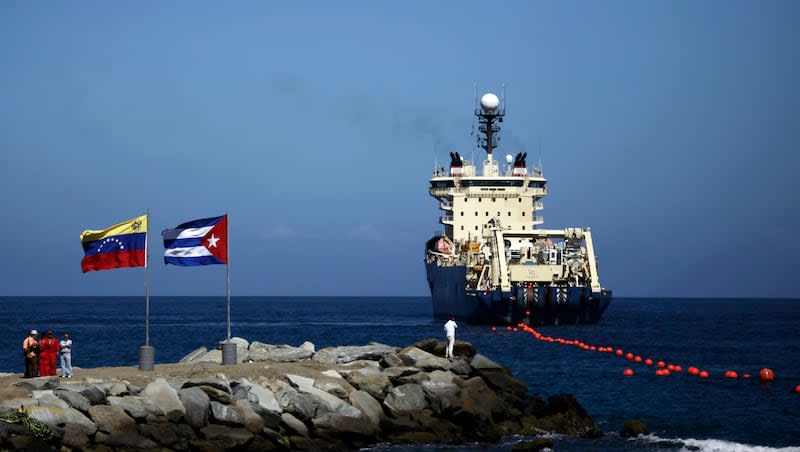What are undersea cables? And what does the internet have to do with them?

Modern society probably couldn’t survive without the internet. Businesses, schools and families rely on it to complete daily tasks.
But despite this reliance, most people don’t understand how the internet actually works or what it has to do with cables on the ocean floor.
Africa’s internet dilemma
Last week, the internet crashed in Central and West Africa, and people there continue to experience disruptions in service, per The Guardian. It reported that at least a dozen countries have been impacted, with severe outages being seen along the Ivory Coast.
The Nigerian Communications Commission shared that the internet outages were a result of damage to undersea cables running along the West African coast, according to the BBC. Undersea cables can get damaged or even cut by debris.
The history of undersea cables
Before the internet and phones, there was the telegraph.
In 1858, two ships met in the middle of the Atlantic Ocean and connected a cable that was less than an inch wide but over 2,500 miles long. Once connected, it literally linked North America to Europe and allowed messages to be sent by telegraph back and forth from both continents, per CNN.
It wasn’t until 1866 that the cable was able to successfully send telegraphs within a few minutes instead of hours, according to the National Oceanic and Atmospheric Administration. In 1956, coaxial cables were put into place for phone communications, and in 1988, the first fiber-optic cable was installed.
Now, there are over 380 undersea cables worldwide, according to CNN. When measured all together, they stretch more than 745,000 miles.
Undersea cables, also known as submarine cables, have proven to work better than satellites when it comes to transmitting data, per NOAA.
How are undersea cables made?
For undersea cables to exist, there first needs to be money. According to CNN, giant companies work together to fund the production of undersea cables, including Amazon, Facebook and Google. The New York Times describes the cables as a “freeway for them all to share.”
The New York Times explored how the company SubCom prepares undersea cables. The cables start off as small glass fiber threads before going through a high-speed mill that wraps the wires in copper. An outer layer of plastic, steel or tar is then added depending on where the cable will be installed. In the end, the cable will be about the size of a watering hose and can last up to 25 years in the ocean.
For undersea cables to work well, they need to be placed in deep parts of the ocean where there are flat sea beds, according to CNN. Once the area has been mapped for installation, a ship is sent out to sea for months at a time and installs the cable, per The New York Times.
Undersea cables do get damaged from time to time by both nature and humans. CNN reported on how, in 2012, Hurricane Sandy damaged the cables that connected North America to Europe and how, in 2006, an earthquake near Taiwan damaged the cables that connected several East Asian countries.
Humans can damage undersea cables while fishing or from their ship anchors or — in extreme cases — sabotage them.
Issues with undersea cables
One concern that arises with undersea cables is the unknown impact they may have on marine life. According to the BBC, there are two types of undersea cables: telecommunication cables and high voltage power cables. Telecommunication cables are the ones that cross the deep oceans and connect continents, while high voltage power cables stay near the coasts.
Marine scientists are concerned about the electromagnetic fields that undersea cables can produce and their impacts on the natural wildlife in the ocean, per BBC. Many marine animals rely on their innate ability to find magnetic north to get around and use electric fields to hunt prey.
Another potential problem with undersea cables is their vulnerability. CNN reported on a study conducted by AT&T that found that attackers can force internet users onto cables under the attackers’ control by targeting specific parts of a cable’s infrastructure (normally where it connects to land). This causes internet communications to be exposed to the attacker without the internet user realizing it.

